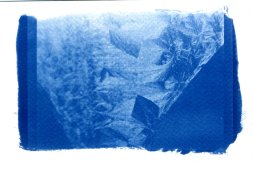optique
Member
I am interested in trying out an alt process but I am confused as to which one to try. I have been reading from the book Historic Photographic Processes by R. Farber and enjoying it a lot.
I went to Amon Carter Museum in Ft Worth and saw Albumen and Platinum prints which looked very nice. I know I should spend more time looking at actual prints to learn what I like. I mean, why try a process if you don't like the look, right? Plus, I know one can not look at online galleries alone to pick the look you want, right?
Another problem I have is that I do not have a LF camera, only MF and 35mm. (I do see a 5x7 or 8x10 LF in my future, though.) I have some ideas of some shots whoose 6x7cm negatives when contact printed together would be nice. Maybe this will be enough of a start to see if I like it or not. Of course, I have no print frame, or UV source other than the sun, but I do have a darkroom (RC paper gelatin silver). At first I was interested in Bromoil for obvious reasons, but I think not, now. I would prefer to shy away from any process that requires more precaution than gloves and goggles. I also think I would like POP more than developing out but I am open to both.
I would be interested in hearing from any of you, what drew you to a particular alt process.
Please indicate which of these processes do you think is a suitable for a beginner.
Could you include comments on these processes as well:
Albumen-I really like the looks of these prints, but maybe another process is more appropriate to me?
Cyanotype-don't like the "blue" look, but I know it's cheap and easy.
VDB-I like the fact it's cheap to try, but I am not sure I like the "brown" tone. Is toning an option to get it more cool?
Palladium (ziatype)-I like the look of the few prints I have seen in person, and those in my book. I know Pt and ziatype is not cheap but I feel drawn to these.
I hope I have not been too rambling in this.
Have a great day and thanks in advance.
Steve.
ps
I love apug!
I went to Amon Carter Museum in Ft Worth and saw Albumen and Platinum prints which looked very nice. I know I should spend more time looking at actual prints to learn what I like. I mean, why try a process if you don't like the look, right? Plus, I know one can not look at online galleries alone to pick the look you want, right?
Another problem I have is that I do not have a LF camera, only MF and 35mm. (I do see a 5x7 or 8x10 LF in my future, though.) I have some ideas of some shots whoose 6x7cm negatives when contact printed together would be nice. Maybe this will be enough of a start to see if I like it or not. Of course, I have no print frame, or UV source other than the sun, but I do have a darkroom (RC paper gelatin silver). At first I was interested in Bromoil for obvious reasons, but I think not, now. I would prefer to shy away from any process that requires more precaution than gloves and goggles. I also think I would like POP more than developing out but I am open to both.
I would be interested in hearing from any of you, what drew you to a particular alt process.
Please indicate which of these processes do you think is a suitable for a beginner.
Could you include comments on these processes as well:
Albumen-I really like the looks of these prints, but maybe another process is more appropriate to me?
Cyanotype-don't like the "blue" look, but I know it's cheap and easy.
VDB-I like the fact it's cheap to try, but I am not sure I like the "brown" tone. Is toning an option to get it more cool?
Palladium (ziatype)-I like the look of the few prints I have seen in person, and those in my book. I know Pt and ziatype is not cheap but I feel drawn to these.
I hope I have not been too rambling in this.
Have a great day and thanks in advance.
Steve.
ps
I love apug!


 Just get stuck in there, ask here as you run into troubles and we can help you learn from there. Don't do anything you don't want to.
Just get stuck in there, ask here as you run into troubles and we can help you learn from there. Don't do anything you don't want to. 



